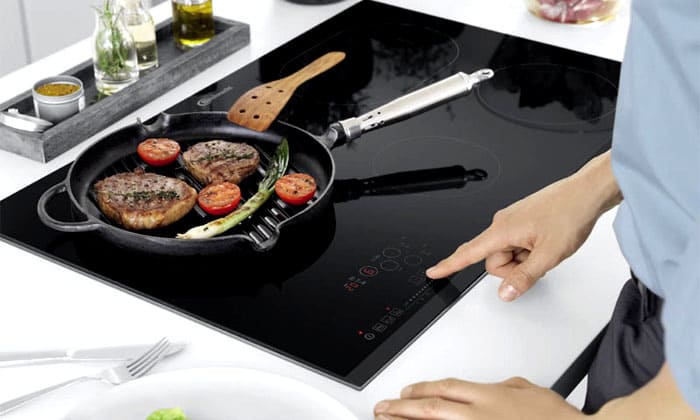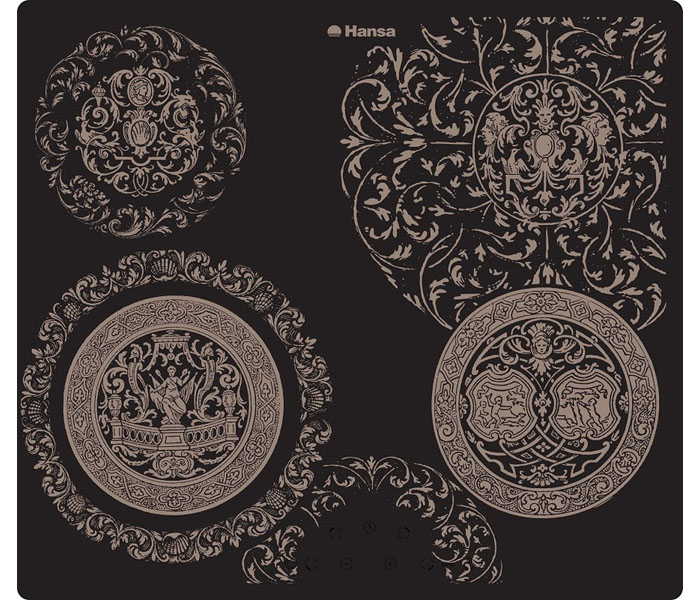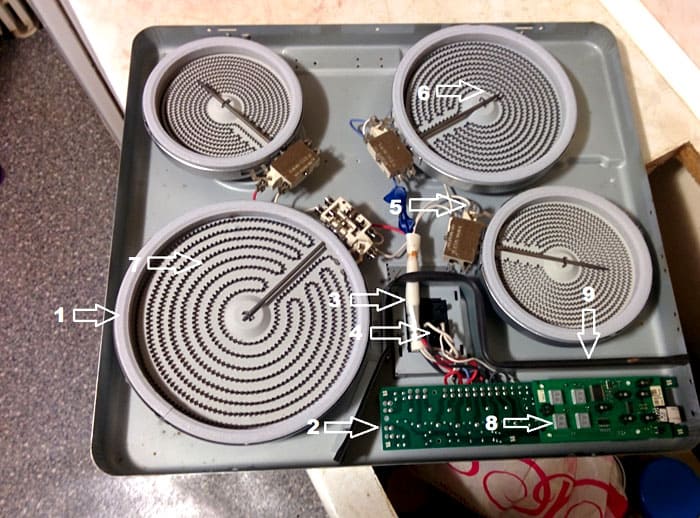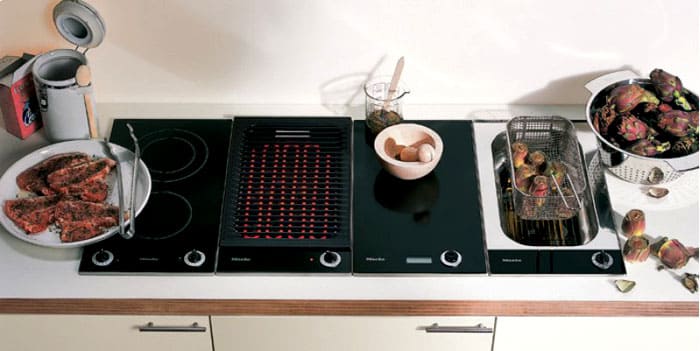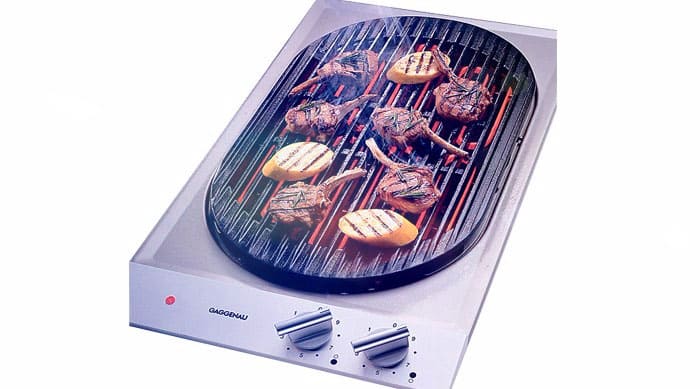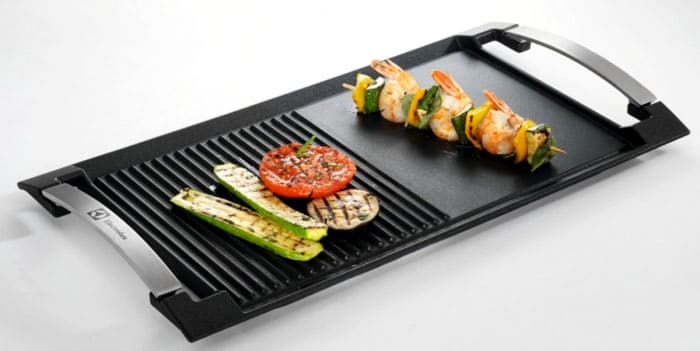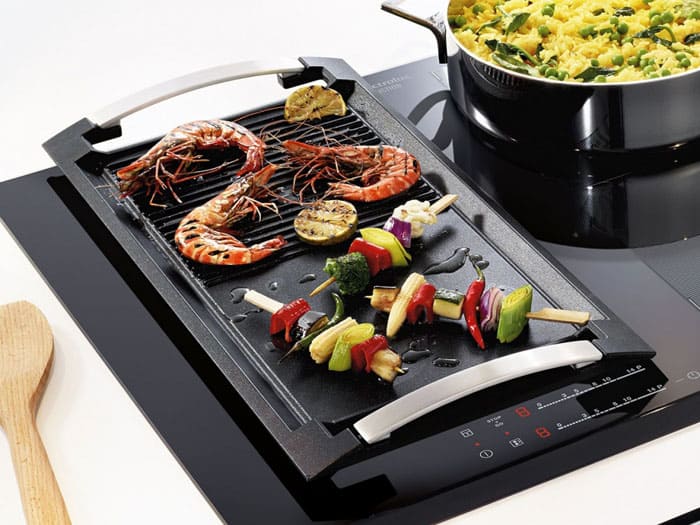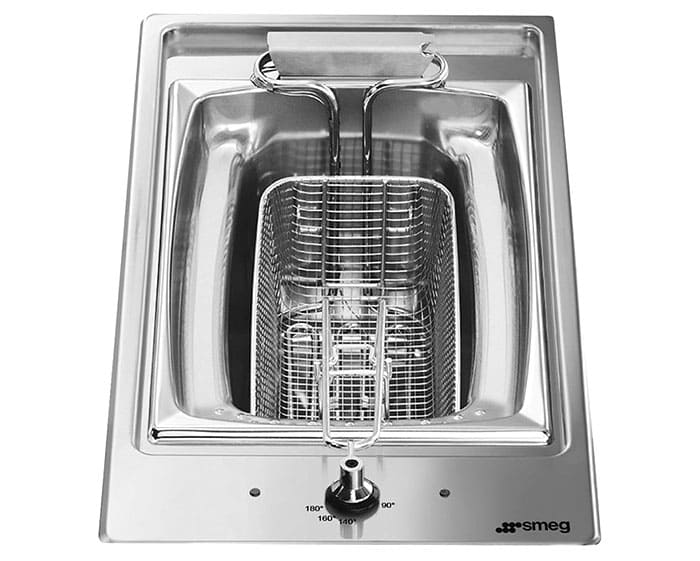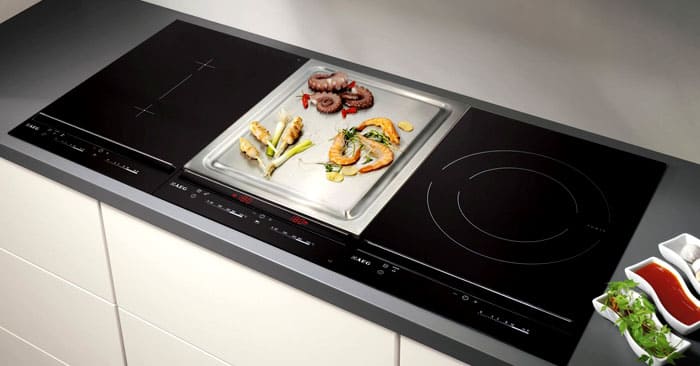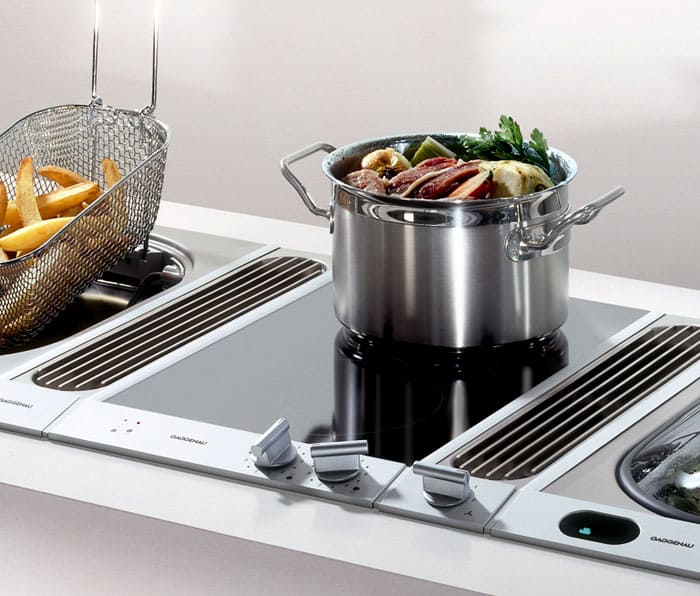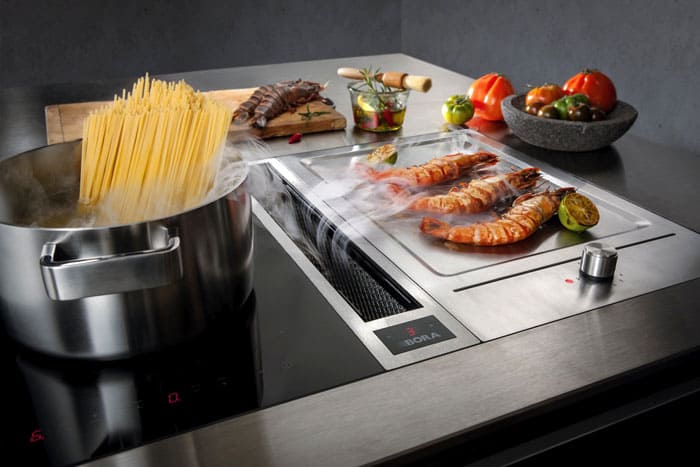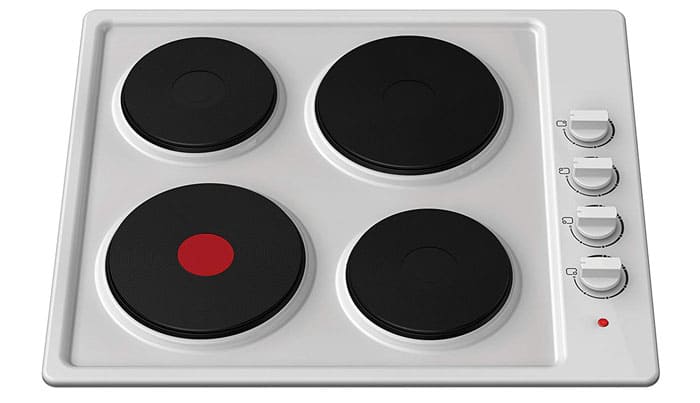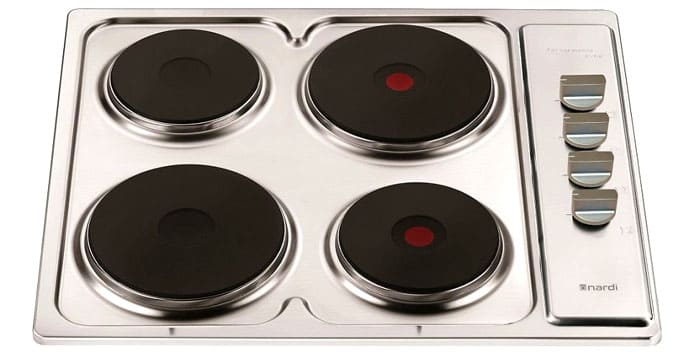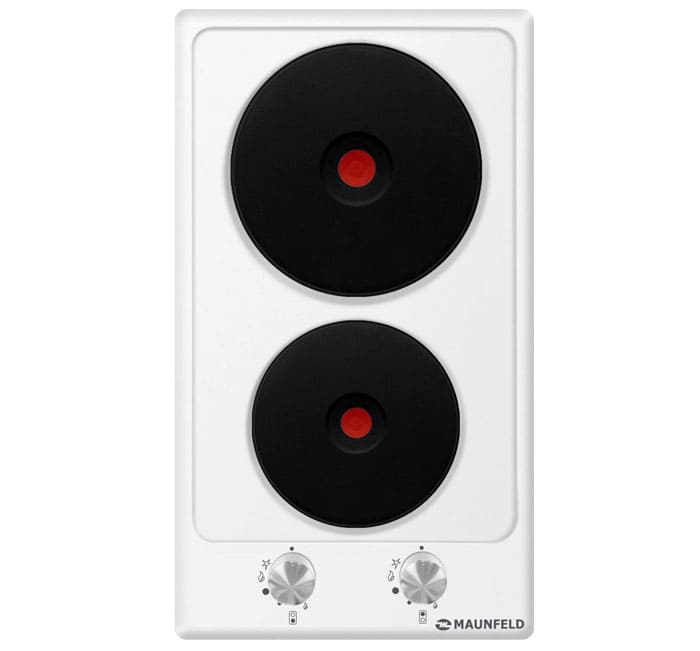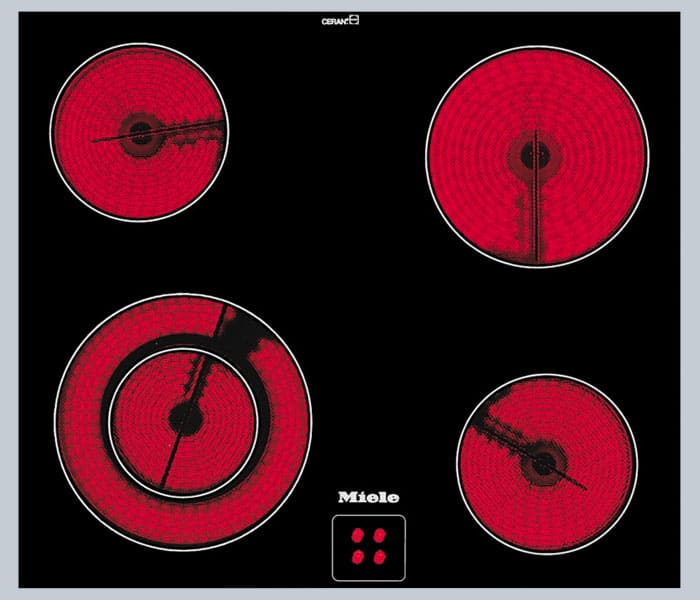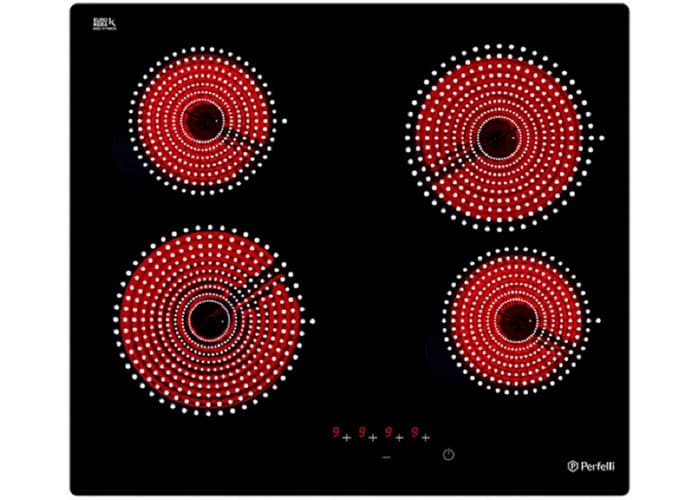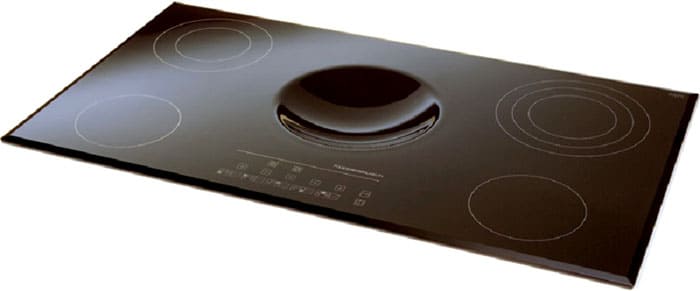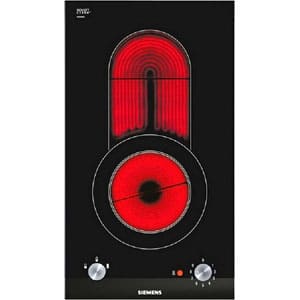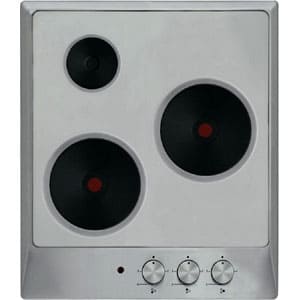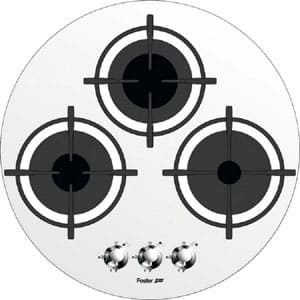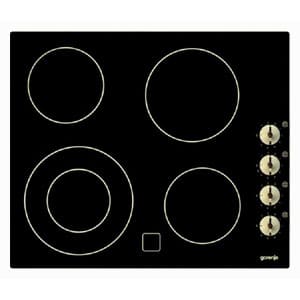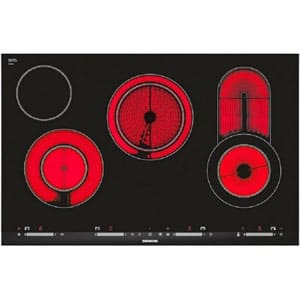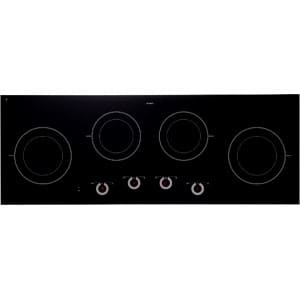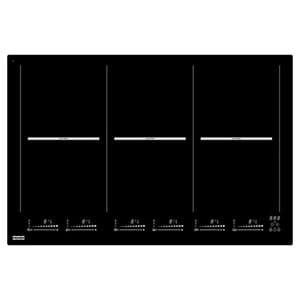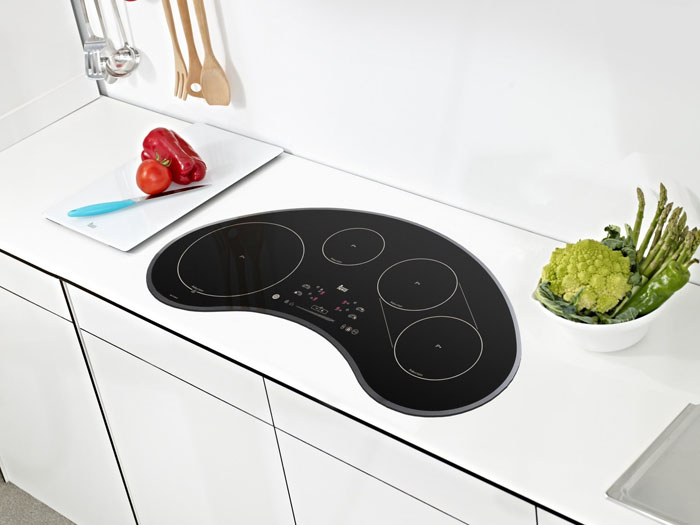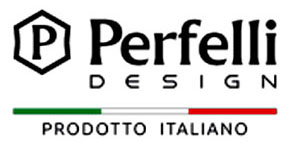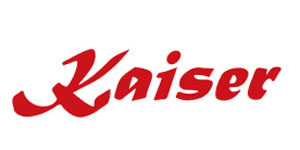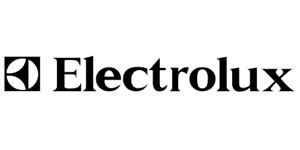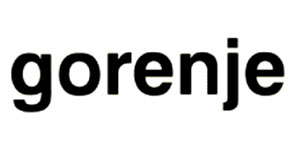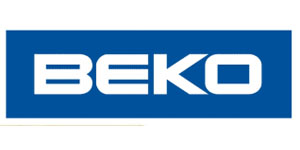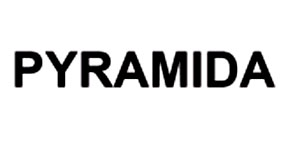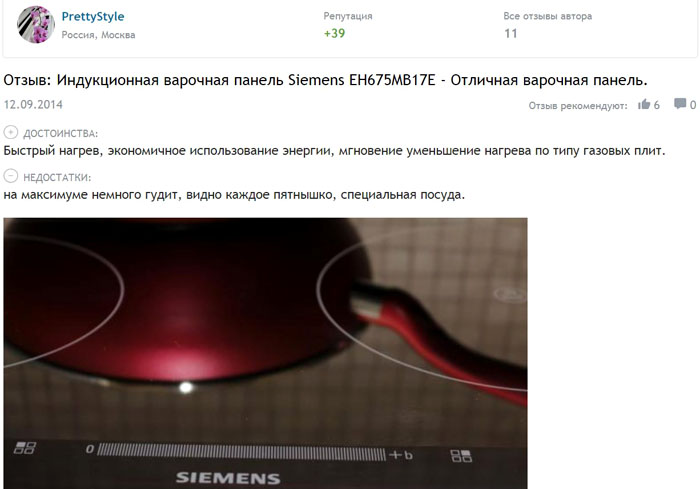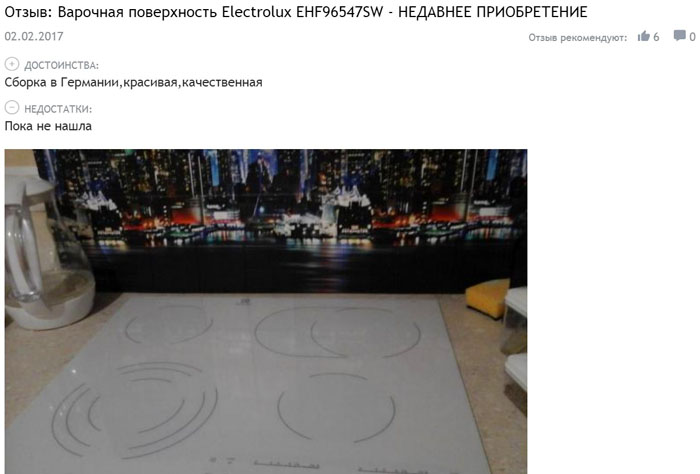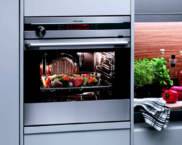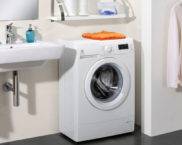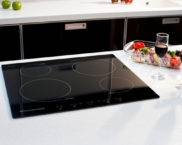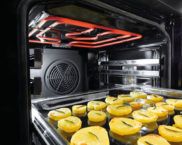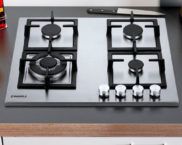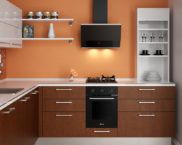Electric hob: device, characteristics, how to choose
In most cases, our kitchens have gas stoves. Many people treat electric hobs with prejudice as a kind of forced replacement, which will take a long time to get used to. The reasons for this attitude lie in a banal ignorance of performance and functionality. In this article we will show you what a modern electric hob is, how to choose one. Let's talk about the main parameters, varieties and functions.
The content of the article
The basic structure of electric hobs and their types
Gasification of residential buildings is not so widespread in the far abroad. Therefore, home appliance manufacturers have paid close attention to the development of comfortable, functional electric hobs. Compared to gas, they have a number of undeniable advantages:
- Safety - gas leaks and all associated problems and risks are completely excluded. You can connect such equipment yourself. This does not require obtaining different permissions.
- Functionality. The gas burner can be adjusted only by one parameter - turn down or turn up the heat. Electric hobs have much more such functions: from automatically turning on (turning off) a hotplate when something is installed on it, to recording a sequence of temperature regimes during cooking.
- Design. By removing the restrictions on gas equipment that imposed safety requirements, engineers were able to bring to life the most original and daring design solutions.
Classic
This electric hob is a high-tech device. Its body is made of steel, glass ceramics or other material. It is 4-7 cm thick and lightweight.Depending on the model, from 2 to 7 burners of different power and diameter can be located on the surface.
Important! The electrical hob must be connected via a separate power line with its own RCD.
The main components of an electric hob:
- Glass ceramic hob body.
- Control Panel.
- Control signal wiring.
- Terminal block for connecting the power supply.
- Thermostat connection terminal, through which power is supplied to the heating coil.
- Thermostat.
- Heating coil.
- Control panel indicators that provide feedback and control over the efficiency of the burners.
- Protective element with a seal that separates the control panel from the high temperature zone.
Related article:
Induction hob: pros and cons. Even an ordinary gas stove can be replaced. So, the induction hob is becoming more and more popular. Read about its pros and cons, the nuances of choice in the article.
Grill, deep fryer, teppan yaki, double boiler, extractor hood
Fierce competition among home appliance manufacturers has led to the emergence of various hybrid electric hob devices. Recently, there has been a tendency to switch to modular electric kitchens, when each hob or other device of the hob is a separate module. This technology is quite convenient, as it allows for individual packaging with the necessary kitchen equipment.
Grill
There are two modifications:
- solid metal panel with corrugation;
- steel or cast iron grate over a container with a heating coil. The tank is designed for charging charcoal.
It should be noted that the first option, in the form of electric hobs, does not make sense to acquire, since there are special metal panels for cooking. They allow you to turn any hob into grill.
A dedicated cooking surface and its use on an electric hob:
Deep fryer
It is found only in a modular design without a rigid connection to the hob. It is one of the built-in elements. Main selection criteria:
- container volume;
- maximum heating temperature;
- removable capacity;
- the presence of a cover and a mechanism for lifting the net.
Teppan yaki
This is a smooth metal surface with frying edges, in fact, analogous to a grill. It is widely used for cooking in Eastern culture.
The main criteria for choosing an accessory are:
- maximum temperature with the ability to adjust it;
- the presence of heating elements under the entire cooking surface;
- the presence of sides or drains.
Double boiler
This device is ideal for adherents of dietary and healthy eating. The steamer has a large useful volume and power. You can cook on two levels. When choosing, special attention should be paid to the presence of a security system. The device should turn off when overheating or when the water has completely evaporated. The control system has a built-in timer and a wide range temperature control system.
Hood
The electric hob can be supplied complete with hood... Moreover, it can be both built-in and domed. A built-in cooker hood is usually installed in the work surface of a worktop. In this case, it is necessary to take into account a significant increase in the technological gap up to 25-30 cm under the surface of the table top.
Choosing an electric hob
When choosing an electric hob, pay particular attention to the type of heating elements. This affects not only the speed of cooking and energy savings, but also the ease of use. The second most important criterion is the material of manufacture of the surface itself. As a rule, ego is judged by practicality: the degree of dirtiness, ease of cleaning, the ability to use abrasive cleaners, the need for special care, and the like. The final selection condition is the different functionality and control features. Let's analyze the listed parameters and some other characteristics in more detail.
Cover material
The front side of the electric hob is made of stainless steel, glass ceramic or heat-resistant enamel. It is impossible to say unequivocally which material is the best. They differ significantly in their performance characteristics. Each of them requires special care.
Glass ceramics
It is the most expensive, but nevertheless, very popular material for hobs. It has an attractive appearance and is quite practical to use. Due to its density and smoothness, any dirt is removed with one movement of the hand. The material has a fairly low thermal inertness, so it cools quickly.
However, glass ceramics has a significant drawback - fragility. Despite the assurances of the manufacturers about the high strength and shock resistance of the material, glass ceramics can crack from a point impact. Cracking can cause sudden changes in temperature, such as spilling cold water on a hot surface. When cleaning, limited use of abrasive detergents is allowed.
Enamel
The enamel coating is considered traditional and the most practical for the kitchen. Such material has high hygienic properties, is practical, aesthetically pleasing and affordable. There are two ways to apply enamel:
- hot dipping enamelling - such a coating is resistant to acids, fats, abrasion, but, under mechanical stress, chips can form on it;
- powder coated - more durable and harder. But it is less resistant to abrasion. Light-colored powder enamel can be stained by aggressive detergents.
Stainless steel
The material is notable for its affordable cost and high resistance to temperature effects and mechanical damage. However, polished stainless steel is a very impractical material. Any dirt, up to fingerprints, becomes immediately visible on it. It is recommended to use a matt or pigmented finish, which is less visible for dirt.
Hotplates
Their choice directly depends on the material of the hob. For enamel and stainless steel, cast iron burners are typical. Glass ceramic panels can be equipped with several types of heating elements.
Cast iron
Here, heating coils are used as a heat source. The control is carried out by mechanical valves, and in some cases it is completely absent. It takes 10-15 minutes to reach the maximum heating mode. They have high thermal inertia.
Cast iron burners are the cheapest and most reliable. They rarely break, and repairing them will not be expensive. These heating elements are virtually insensitive to power line voltage surges.
Halogen
Heating is carried out as a result of the interaction of a halogen lamp and a thermal coil. The set temperature regime is reached within a few seconds. Cooling also occurs quickly.During operation, it is necessary to periodically change the halogen lamp, which is a consumable. The main disadvantages can be considered a rather large energy consumption - from 2 kW / h, as well as strong heating of the surface near the burners.
Rapid
A nichrome spiral is used here as a heating element. Exit to the set temperature regime is carried out in 10-15 seconds.
Hi-lights
In this case, high-resistance alloy tapes serve as a heating element. The heating rate of such a burner does not exceed 5-7 seconds, energy consumption is in the range of 1.5-2 kW / h.
Induction
This is the most economical type of burner. The food is heated not by the hob, but directly by the cookware itself. The disadvantage of this type is the impossibility of using aluminum glass or ceramic kitchen utensils. Cooking utensils should be on such a stove, should have the most even surface and be made of ferromagnetic alloys: steel or cast iron.
Number of burners, shape and size of the hob
These parameters are closely related and it makes no sense to consider them separately. Depending on the number of burners, the electric hob has the following dimensions:
Manufacturers today produce electric hobs in a wide variety of shapes. Moreover, the choice of form is dictated not only by design tricks, but also by expediency. The result is a rather unusual, but very comfortable, ergonomic equipment.
Additional functional features
Modern hobs have a lot of additional options that greatly facilitate the cooking process, including:
- precise setting of temperature and operating time;
- the ability to record the sequence of changes in the temperature regime during the cooking process;
- increased heating zones, different shapes with high power sectors (power plus) allow you to quickly cook food in large dishes;
- iQuick Boiling mode - optimizes device power consumption;
- Stop & Go mode makes it possible to pause the cooking process, and then restart it, keeping the preset temperature and cooking time.
- protection of unauthorized switching on of the hob by children;
- residual heat indicator.
Control system
Most budget-class electric hobs are equipped with a mechanical control system with stepwise switching of the heating intensity. More expensive models are controlled using a touch panel, which displays various information about the current state of the equipment, including temperature and cooking time.
Related article:
Connecting the hob to the mains. In this article, we will take a closer look at how to seal and seal the panel during installation, how to connect the panel to the network with one and three phases, and other useful tips.
Leading manufacturers
At the moment, almost all household equipment is manufactured in China. However, well-known brands are much more attentive to the quality of their products. In addition, there are many Chinese manufacturers producing fairly high quality products.
| Brand name | Product advantages |
|---|---|
| A diverse range of models, aesthetic appearance, practicality and ease of maintenance, safety. | |
| High quality materials and workmanship, well-thought-out ergonomics of hobs, increased area of burners. | |
| High efficiency of heating elements, energy efficiency and energy saving, safety and control system, a wide range of standard sizes. | |
| Simplicity of control and high accuracy of maintaining the set modes, a wide range of models with many modifications, safety of use, the presence of an automatic shutdown system. | |
| Affordable cost, wide model range, well-thought-out ergonomic design, intuitive operation. | |
| Aesthetic appearance, resistance of the surface material to external influences, the use of several safety systems, overvoltage and short circuit protection. | |
| High quality products, reliability and durability, the use of technological innovations, a wide range of models. | |
| Material quality control, various modes of operation, extensive model range. | |
| Elegant appearance and design ergonomics, ease of use, high reliability and safety of operation. |
Popular models in 2018
Below are the reviews on hobs that are the top sellers in 2018 according to the ratings of the leading online stores.
Feedback on the Bosch PIC 645 F 17 E model:
Feedback on Siemens EX675LXC1E model:
Feedback on the Electrolux EHF96547SW model:
Finally
Electric hobs are vastly superior to conventional gas stoves in terms of functionality and design. However, their widespread distribution is hampered not only by their high cost, but also by systematic power outages.
Video: how to choose a hob



